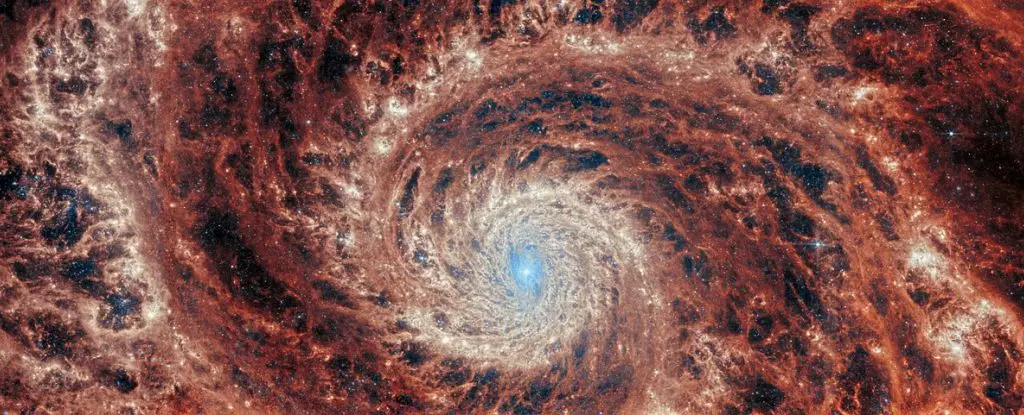The concept of the Cosmic Dawn marks a significant period in the history of the universe, occurring shortly after the Big Bang approximately 13.8 billion years ago. This era was characterized by the formation of the first galaxies from a hot and dense primordial plasma, a dense soup of particles that gradually cooled to allow matter to coalesce into cosmic structures. For decades, astronomers have speculated on the timeline and the process of galaxy formation, often conceptualizing it as a slow and gradual evolution. However, a recent discovery by the James Webb Space Telescope (JWST) challenges this notion, particularly in regards to the emergence of grand design spiral galaxies during this formative period.
The JWST has unveiled a remarkable find in the form of a massive galaxy named Zhúlóng, which translates to “Torch Dragon” in Chinese mythology. This discovery is groundbreaking because Zhúlóng dates back to just 12.8 billion years after the Big Bang, a time when the universe was a mere one billion years old. What sets Zhúlóng apart is not only its mass but also its intricate and visually striking spiral structure, which had previously been presumed to have taken longer to develop. The work led by Mengyuan Xiao from the University of Geneva indicates a major re-assessment of when and how such elaborately structured galaxies formed in the early universe.
Zhúlóng is classified as a grand design spiral galaxy, representing the apex of galaxy formation, featuring well-defined spiral arms that radiate from a bright galactic center. In today’s universe, there are various types of galaxies—ranging from irregular to elliptical—each exhibiting distinct characteristics due to their formation histories. However, the presence of a well-formed grand design spiral as early as one billion years after the Big Bang is astonishing and rare, challenging conventional wisdom that such structures take much longer to manifest.
The researchers noted that Zhúlóng boasts a diameter of approximately 62,000 light-years and possesses a mass comparable to our own Milky Way galaxy. This size is remarkable for its age, and the discovery suggests that large, complex galaxies could form more quickly than astronomers previously believed. The central supermassive black hole, although seemingly dormant at the moment, hints at a galaxy moving through a period of stability after an era of intense star formation, which is currently estimated at a rate between 20 and 155 solar masses per year.
The implications of Zhúlóng’s discovery extend beyond the galaxy itself; they offer vital new constraints for models related to the formation of massive galaxies in the early universe. Researchers posit that understanding the characteristics of Zhúlóng could reshape our comprehension of how quickly spiral structures like those in the Milky Way might have developed following the Big Bang. If spiral galaxies can emerge as rapidly as this discovery suggests, it leads to fundamental questions about the processes involved in the accumulation of mass and the transition of galaxies from primordial forms to mature structures.
Scientists now have the task of integrating these findings with existing models of cosmic evolution, potentially leading to a paradigm shift in our understanding of the universe’s structure and the dynamics involved in galaxy formation.
The discovery of Zhúlóng by the JWST signifies a monumental leap in our understanding of earlier galaxy formation. As astronomers continue to investigate the intricate details of galaxies from the Cosmic Dawn, we can anticipate a deeper grasp of the fundamental mechanisms that shaped the universe we observe today. The awe and wonder surrounding this discovery serve as a reminder of how much there is still to explore in the cosmos. The implications of such discoveries are profound, paving the way for new research, refinement of existing theories, and inspiring questions about the universe’s early evolution and the nature of its diverse components. As we gaze into the remnants of our ancient universe, each new finding rebuilds our narrative of cosmic history.

